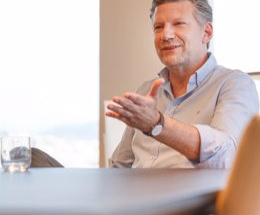Pioneering Hawthorne rocket maker SpaceX will be the first commercial company to lift off from the historic Florida launchpad built for the Apollo moon mission if today’s morning’s launch goes off as scheduled.
The largely research-based trip for NASA to the International Space Station’s national laboratory will depart from Launch Complex 39-A at Cape Canaveral’s Kennedy Space Center.
The trip is important for SpaceX, but also for the greater Los Angeles region and global scientific studies.
The 23-story-tall, two-stage Falcon 9 rocket was built at SpaceX’s Hawthorne headquarters, along with the payload-carrying Dragon spacecraft on its nose. The Dragon carries tons of food, supplies and research materials, including 15 different Department of Defense studies. One of those will allow scientists to better understand how certain species regrow damaged limbs so the same can be done for humans.
A Lightning Imaging Sensor on board will expand research done at Pasadena’s NASA Jet Propulsion Laboratory to better understand when, where and why lightning occurs.
“There are hundreds of experiments (on board), really cool stuff,” said SpaceX Chief Operating Officer Gwynne Shotwell.
If the launch is delayed due to a thick cloud cover or because of a small helium leak detected Friday in the rocket’s propellant pump system, SpaceX officials intend to launch Sunday. A live video feed of the mission, along with commentary, can be viewed on YouTube or NASA websites at https://tinyurl.com/gkulrod.
When the Dragon spacecraft reaches the International Space Station two days after leaving Earth, a team of astronauts and cosmonauts will begin investigating hundreds of scientific problems. Stem cells, live mice and plants, cancer-fighting antibodies, and a host of weather sensors are on board.
“This is really the golden age for space science research,” said Tara Ruttley, a lead scientist for the International Space Station. The payload “is going to send research and hardware to the station that’s going to represent the work of about 800 scientists around the world. Microgravity is the one unique resource there that you really can’t find here on Earth.”
Beyond the moon
The flight’s historic nature is highlighted by its liftoff from the world’s most famous landing pad. The Apollo 11 moon mission, which used equipment manufactured at NASA’s former industrial plant in Downey, left from Launch Complex 39-A.
The space shuttle program that followed also relied on the launchpad.
“Every launch, for me, is a significant emotional event,” said Shotwell said. “They’re always nerve-racking. This is an extra-special launch, for sure.
“I remember watching the lunar landing, sitting in front of a TV screen with a crappy visual, all black-and-white and jagged-y. I remember my dad telling me it was really important. This is probably the most exciting launch for me. SpaceX being here side by side with NASA is extraordinary for the space industry.”
SpaceX’s success as a commercial rocket maker has disrupted the nation’s space-flight market previously monopolized by NASA contractors Boeing Co. and Lockheed Martin.
Only since 2015 has billionaire entrepreneur Elon Musk, who founded SpaceX 14 years ago, been able to snag lucrative government contracts after suing the U.S. Air Force for the opportunity to bid on them.
Since then, SpaceX — the first commercial U.S. rocket maker to dock at the ISS and return reusable rocket boosters from orbit — has been handed several government jobs. The company can launch loads into orbit at a fraction of the cost of the legacy rocket builders.
This mission is dubbed CRS-10 because it is SpaceX’s 10th commercial resupply trip to the ISS on behalf of NASA, which has 10 more planned contracted deliveries through 2019 with the Hawthorne company.
“It might be a commercial vehicle, but there is a lot of government and private science on board,” Shotwell said. “It is a hybrid launch — a government customer with a commercial company.”
While the ongoing public-private partnership has been fruitful for both sides, NASA and SpaceX made it clear this week they are competing against one another to develop crew-carrying heavy-lift rockets designed to explore Mars and planets beyond the solar system.
NASA officials said Wednesday that they are now considering putting a crew on board the first flight of their heavy rocket under development, called Space Launch System (SLS) next year. That’s a big jump, since the agency initially planned to test the heavy rocket — designed to be the biggest ever made — for several years without people aboard.
SpaceX’s Shotwell responded in a Friday press briefing that the company is putting its Mars Red Dragon mission work on hold until 2020 so it can accelerate development of the Falcon Heavy rocket — the main competitor to NASA’s SLS.
“We’re going to launch Falcon Heavy this summer,” Shotwell said. “We want to take Dragons we’ve previously flown, put them on the Falcon Heavy and fly them to Mars. We were focused on 2018 but we felt we (now) need to focus more on the Falcon Heavy. We’re looking at 2020 for the next Mars opportunity.”
She said SpaceX is working now to ensure the Falcon Heavy engines are designed well enough to carry people.
The Falcon Heavy also will launch from the Kennedy Space Center launchpad, she said. SpaceX has a second Florida launchpad at Cape Canaveral that is still undergoing repairs from damage caused by a Sept. 1 explosion during a Falcon 9 test launch. Its West Coast launchpad is at Vandenberg Air Force Base.
Reusability is key to SpaceX’s mission. The company has successfully brought seven first-stage Falcon 9 rocket boosters back to Earth, including one off San Diego in January that later was parked in San Pedro.
For this launch, it will again attempt to land the first-stage rocket back on Earth after it delivers the second stage carrying the payload into orbit.
“This hardware is so expensive,” Shotwell said. “We want to save everything.”
Furthering scientific research
Among the 5,500 pounds of cargo onboard the Dragon capsule are cloned immune cells useful in fighting cancer and other ailments. Scientists believe they can grow purer forms of crystallized antibodies in microgravity.
Stem cells also will be delivered so scientists on the ISS national laboratory can observe their growth in microgravity, since the lack of gravity allows them to expand and accelerate cell growth.
Several weather and atmospheric sensors aboard will be attached to the outside of the space station, where they can observe global conditions.
The SAGE III will monitor the health of the ozone layer, which continues to recover from damage by ozone-destroying gases discovered in the 1980s.
A Lightning Imaging Sensor will be attached to the outside of the space station. There, it will monitor lightning flashes on Earth to better understand weather prediction, climate change and atmospheric changes.
“One to 2,000 thunderstorms occur at any given time on Earth,” said Richard Blakeslee, who leads the research. “Improved weather forecasts will lead to saving lives and property here in the U.S. and elsewhere around the world. This is able to detect lightning during the daytime (unlike cameras).”
Our editors found this article on this site using Google and regenerated it for our readers.













